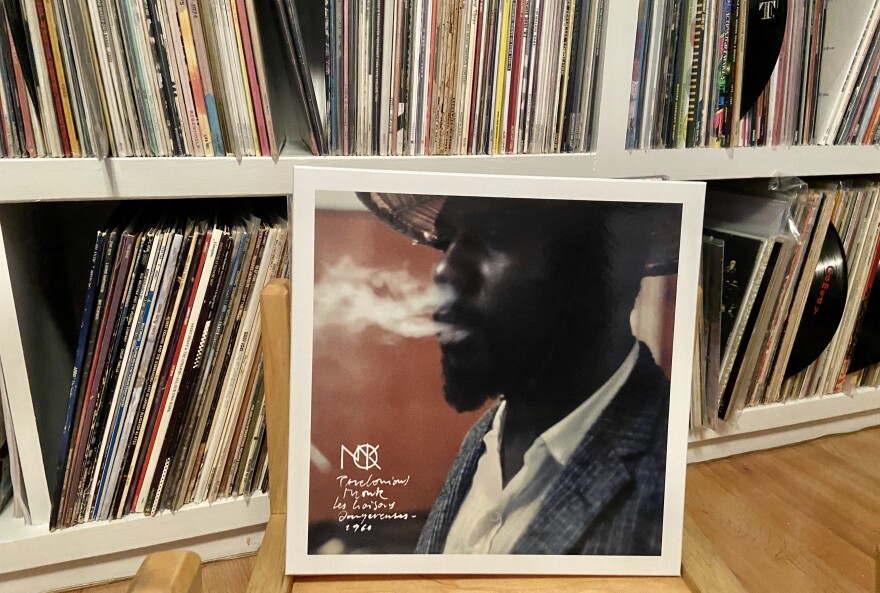One of the most idiosyncratic musicians in jazz, Thelonious Monk is also one of the most popular. KNKX jazz host Abe Beeson is a big fan, but he’s been wondering: just what is it that makes Monk’s music so cool?When I was first learning about jazz as a young DJ in college, it was Thelonious Monk’s music that got me hooked. Compared to the pretty, melodic sound of piano stars like Bill Evans and Oscar Peterson…to me, Monk sounded like a punk rocker – even when he sounded pretty.
A teenaged Monk studied with the great pianist and composer Mary Lou Williams, who helped guide the bebop revolution in the early 40s, of which Thelonious Monk was a key innovator. After hours joints like Minton’s Playhouse in Harlem were the laboratories of bebop, where Monk developed his unique style.
From his earliest Blue Note recordings, that Monk style was his own. Angular, rhythmic chords, and adventurous melodies were organized into eventually famous tunes like “Well, You Needn’t.”
His style fully formed and many of his great songs already written early in his career, Monk wasn’t a big star…yet. One album that helped introduce his unique playing was his Duke Ellington tribute in 1955, giving listeners a view of Monk’s sound through Ellington’s well-established hits.
With records in the late 50s featuring Sonny Rollins, John Coltrane and eventually his right-hand man Charlie Rouse on saxophones… jazz fans finally began to appreciate Monk’s music. Rouse’s debut came in the 1959 concert and ensuing album, Thelonious Monk Orchestra Live at Town Hall. Monk’s uniqueness comes alive in Hall Overton’s arrangements as bebop meets the traditional big band.
Now, not everyone “gets” Monk. I’ll never forget a call from a KPLU listener one evening, complaining that “this pianist was playing the wrong notes.”
Sadly, I’d barely earned a C- in Music Theory class a couple years earlier, so I didn’t know what to say. How could I explain why Thelonious Monk sounded so cool to me?
To find out, I asked Seattle pianist, composer, educator and Thelonious Monk fan Wayne Horvitz to explain what it is that makes these “wrong” notes sound so “right”.
Wayne Horvitz: "I have no issue with anyone thinking Monk used 'wrong' notes. What's important is he always picked the 'right' wrong notes. Just like Bartok or Stravinsky or Ellington, he was a modernist. What's amazing is how consistent he was in all his compositions. American music, jazz and blues in particular, it reinvented the role of the Dominant 7th chord. Monk explored that like nobody's business. He was like Mozart, he had a couple of extraordinary ideas that he worked and reworked his entire creative life. At least, that's the way I look at it."
OK, I think I get it. Of course, anyone can play that chord, and almost every pianist does. But it’s the consistency Wayne talked about that’s the key.
Thelonious Monk really was a fantastic composer, and he used that diminished 7th consistently from his earliest compositions.
Take “Round Midnight”, first recorded with the Cootie Williams band in 1944. In this later solo Monk recording, you can hear that 7th chord angularity right there in the melody.
That’s just about the coolest…and most beautiful music I’ve ever heard. Many musicians agree, Miles Davis famously recorded “Round Midnight”, and hundreds of others have made inspired recordings of Monk’s music.
In fact, Thelonious Monk is the 2nd most recorded jazz composer after Duke Ellington – and Duke wrote about a thousand songs to Monk’s 70-or-so. Monk is still inspiring musicians of all types, and his music remains a gateway to jazz for listeners around the world. In fact, he’s still making records today.
His unreleased soundtrack to the 1960 film Les Liaisons Dangerouses came out in 2017, and later this year a new 1963 recording live in Paris will hit record stores.
I can’t wait to hear it…. but I understand if Thelonious isn’t your thing. To my ears, though, those “wrong” notes sound just exactly right.




